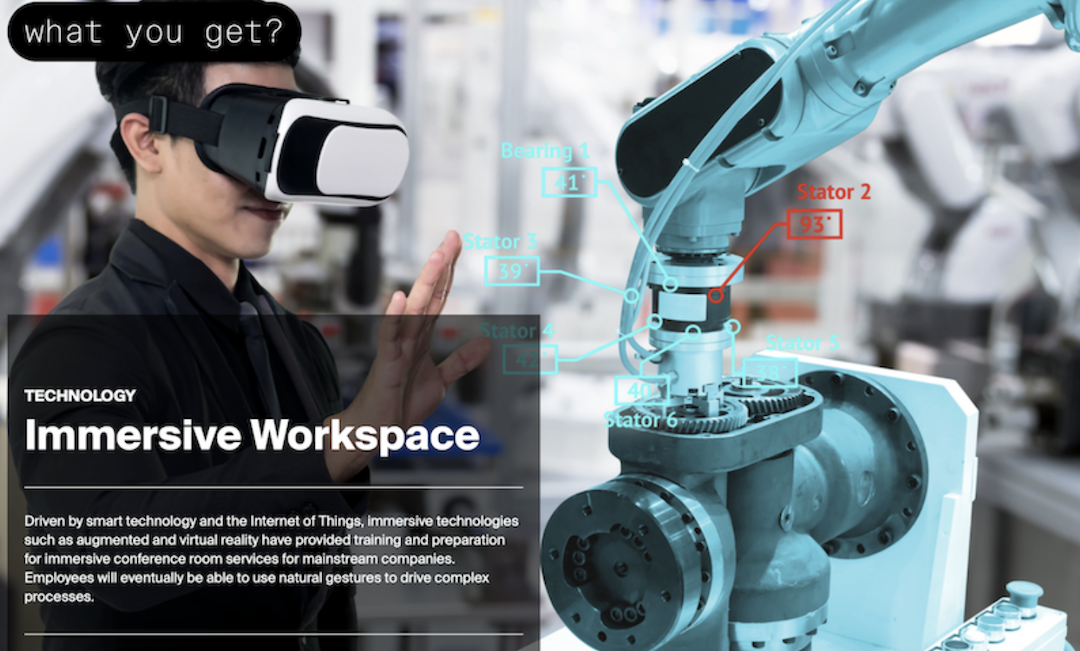Investing in new technologies is always a risk, given the high failure rate of startups and the speed at which even newer technology emerges. This is particularly true of Construction Technology, with literally thousands of products and processes that are applicable to the built environment, and into which more than $1.3 billion in investment capital was poured last year, a 56% increase over 2019, according to CB Insights’ estimates.
How does a buyer determine what will work best for its business, even with technology that has a performance track record?
To sort through the clutter, the Massachusetts Institute of Technology’s Real Estate Innovation Lab (REIL), working with JLL, one of the Lab’s founding partners, has launched Tech Tracker (techtracker.mit.edu), a free online webtool that scouts, analyzes, and predicts the future of technology within the built environment. The tool’s value to the real estate community is its insight into which technology might have the greatest potential impact on the development, management, and configuring of property and space.
MIT has been trying to track ConTech for eight years, the last two-and-a-half years with JLL, which provided a better understanding of what questions about technology real estate professionals need answers to.
“With the pace of innovation, it’s critical to understand what technologies will be coming and their potential impact in the future,” says Ben Breslau, JLL’s Global Chief Research Officer. “For the first time ever, there’s a single place where we can research and understand the pipeline of technologies from inception to the market. This tool allows us to think through the implications on our ability to meet net-zero carbon targets, create dynamic hybrid workplaces, and improve the resilience of our buildings.”
MIT has created a database of more than 200 sources to inform a catalog of technologies impacting the built environment that Tech Tracker users can search, sort, and organize. According to REIL’s website as of Tech Tracker’s September 8th launch date, the tool has a data framework for 257 of 856 ConTech technologies identified. “What we’re tracking is heavy on those [technologies] in lab space,” says Dr. Andrea Chegut, Director of MIT’s REIL, whom BD+C spoke with this morning.
Within this catalog, MIT profiles each technology tracked to detail its overall concept as well as analytics such as impact factors and big data. Profiles of products and processes are sorted into five categories: automation, sustainability, hybrid work, data analysis, and health and well-being. Hypercells—shape-shifting robotics cubes that can morph into elastic skins—would be one example of automation technology. Photovoltaic facades would fall under sustainability, and self-cleaning materials under health and well-being.
“We wanted to break through the noise and hype to analyze the path of technologies—from when they’re a kernel of an idea in an inventor’s brain to when they’re common place in the real estate marketplace,” explains Dr. Chegut. “The Tech Tracker [replaces] gut feelings about what’s ‘hot’ with actual data and machine-learning algorithms. It takes the mystery out of change and simplifies the ever-changing world of technology within the built environment.”
GAUGING TECH’S ‘AWARENESS’
She fashions Tech Tracker as a “knowledge graph” that’s more than an aggregator of information. Tech Tracker assigns rankings to technologies being tracked, based their relative development trajectories and awareness among various industry groups such as analysts or prospective users. As this tracking is conducted in real time, those rankings are subject to change.
At the moment, Tech Tracker ranks 5G first among all technologies, strategies, stages, and momentum. But that technology is actually “cooling down,” meaning that “you should have heard of it already,” explains Dr. Chegut. Conversely, the Internet of Things, Graphene, and Augmented Reality, the third-, fourth-, and fifth-ranked technologies, are “rising fast,” meaning that they’re gaining awareness, based on MIT’s research.
Other technologies within Tech Tracker’s top 10 include virtual reality, photogrammetry, connected home, aramid fibers, exoskeleton, and carbon nanotubes. Smart robotics, which ranks 11th, is “keeping pace.”
TAKING THE LONG VIEW
Getting technology into usable shape for a market that’s ready for it takes time: MIT estimates that it takes an average of 11 years for a tech product or process to go from the lab or inception to research and development; another 7.3 years, on average, from R&D to market; and 21.3 years from market introduction to market standards. A technology’s different stages “aren’t always linear,” either, says Dr. Chegut.
One of Tech Tracker’s filters gauges a product’s awareness via social media, academic theses, and venture capital funding. This awareness quotient is a measure of a technology’s activities or milestones reached, as chronicled by six information platforms: Google News, Twitter, Crunchbase, Google Patent, Google Citation, and MIT Dspace. Dr. Chegut says that as Tech Tracker evolves to find nascent technologies that could impact the built environment, it will naturally expand its information sources.
“So many people come up to me and say this or that technology is a fad,” says Dr. Chegut. “Tech Tracker allows us to start to get a handle on the industry’s R&D.” MIT’s aspiration, she adds, is for real estate professionals to eventually incorporate Tech Tracker into every project proposal they send out, and to use the tool “to be strategic and to look a little bit more longer term.”
Related Stories
AEC Tech | Oct 16, 2024
How AI can augment the design visualization process
Blog author Tim Beecken, AIA, uses the design of an airport as a case-study for AI’s potential in design visualizations.
3D Printing | Oct 9, 2024
3D-printed construction milestones take shape in Tennessee and Texas
Two notable 3D-printed projects mark milestones in the new construction technique of “printing” structures with specialized concrete. In Athens, Tennessee, Walmart hired Alquist 3D to build a 20-foot-high store expansion, one of the largest freestanding 3D-printed commercial concrete structures in the U.S. In Marfa, Texas, the world’s first 3D-printed hotel is under construction at an existing hotel and campground site.
AEC Tech Innovation | Oct 8, 2024
New ABC technology report examines how AI can enhance efficiency, innovation
The latest annual technology report from Associated Builders and Contractors delves into how artificial intelligence can enhance efficiency and innovation in the construction sector. The report includes a resource guide, a case study, insight papers, and an essay concerning applied uses for AI planning, development, and execution.
AEC Tech | Oct 4, 2024
Publication explores how facility managers can use AI
A new guide, “Gamechanger: A Facility Manager’s Guide to Building a Relationship with AI,” provides a roadmap to understanding and using AI in the built environment.
AEC Tech | Oct 3, 2024
4 ways AI impacts building design beyond dramatic imagery
Kristen Forward, Design Technology Futures Leader, NBBJ, shows four ways the firm is using AI to generate value for its clients.
AEC Tech | Sep 25, 2024
Construction industry report shows increased use of robotics on jobsites
Nearly two-thirds of contractors surveyed, who cited use of robotics on jobsites, are either using monitoring and/or service/labor robotics.
AEC Tech | Sep 24, 2024
Generative AI can bolster innovation in construction industry
Jeff Danley, Associate Technology and Innovation Consultant at Burns & McDonnell, suggests several solutions generative AI could have within the construction industry.
3D Printing | Sep 17, 2024
Alquist 3D and Walmart complete one of the nation’s largest free-standing, 3D-printed commercial structures
Walmart has completed one of the largest free-standing, 3D-printed commercial structures in the US. Alquist 3D printed the almost 8,000-sf, 20-foot-high addition to a Walmart store in Athens, Tenn. The expansion, which will be used for online pickup and delivery, is the first time Walmart has applied 3D printing technology at this scale.
3D Printing | Sep 13, 2024
Swiss researchers develop robotic additive manufacturing method that uses earth-based materials—and not cement
Researchers at ETH Zurich, a university in Switzerland, have developed a new robotic additive manufacturing method to help make the construction industry more sustainable. Unlike concrete 3D printing, the process does not require cement.
AEC Tech | Aug 25, 2024
Are AI opportunities overwhelming design and construction firms?
A new survey of A/E firms found that more than three-fifths of 652 respondents expect AI to improve their operational efficiency. That survey, though, also found that the same portion of respondents wasn’t using AI yet, and two-thirds admitted they were struggling with where and how to apply AI.

















